
"Space is for everybody. It’s not just for a few people in science or math, or for a select group of astronauts. That’s our new frontier out there, and it’s everybody’s business to know about space".
- US Teacher & Astronaut Christa McAuliffe
Space activities are used by nations to achieve pride and political convenience, as well as to enhance military and scientific research. In the 1950s, there were two major space powers. Many countries now have an exploration of space, and many more are planning to do so in the future. Business, science, and combat activities all rely on space. Space exploration, on the other hand, remains a closed club. Space exploration is carried out by a small number of countries, the most prominent of which is the United States. Although its potential value for research is restricted, the International Space Station (ISS) is the sole permanent manned station in space.
India and Iran have both stated that they intend to launch human space projects. Russia intends to relaunch its manned space exploration program and has stated that it will construct its space station. Because the current period of space exploration is coming to a close, nations are looking for the next step. The strategic position in space will be determined by the decisions made by the United States and its partners on the future of space travel. The goal of exploration beyond low earth orbit (LEO), the balance between manned and unmanned missions, the future of partnership and cooperation in space, and the ISS's eventual fate are all difficult problems to address as we move forward.
Glossary of Terms:
- International Space Station (ISS) - The International Space Station (ISS) is a space station in low Earth orbit that was built mostly by the United States and Russia, with help and components from a worldwide partnership.
- Low earth orbit (LEO) - Low earth orbit (LEO) is a term used to describe communication satellites whose orbit ranges from around 300 miles above the planet's surface to 1,491 miles. A constellation or swarm is a non-terrestrial network (NTN) of LEO satellites.
- Space exploration - It is the research of the reaches of the universe beyond Earth's atmosphere using crewed and uncrewed spacecraft, as well as the utilization of the information collected to advance understanding of the cosmos and benefit civilization.
Introduction:

Both science and law have gained a new dimension as a result of the entry into space and subsequent advances. In reality, space exploration is one of the domains where science and law are closely linked. While scientific advancements are unquestionably important, laws are required to oversee the use and abuse of science. As a result, they are inextricably linked. Space exploration has brought together lawyers and scientists to form a new world order. As a result, this article will first consider the theme of law and science by examining their synthesis, and then examine the legal consequences of space exploration. The main goal of this essay is to provide a general overview of the future of space exploration and the role of Space laws.
- Combining law and science:
Law and science are two disciplines that share a common goal: to seek the truth. Science, like law, is a pursuit of truth and reality. Science strives to find natural rules when seen in a bigger global context. In the modern world, international law attempts to achieve a just and scientific world order. As a result, the law cannot be distinguished from science.
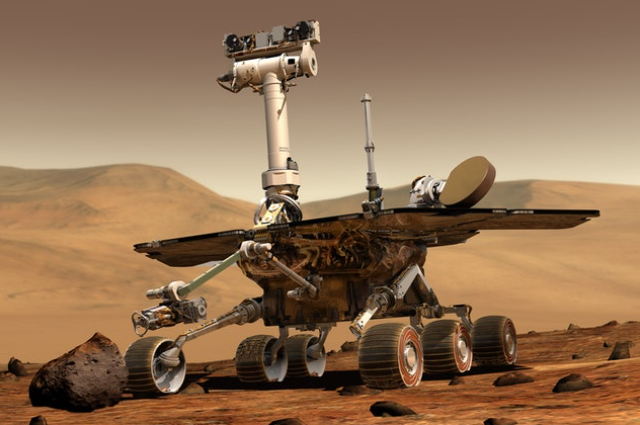
Since the beginning of space travel, the study of international law has taken on a new dimension. Law is now being applied to a variety of issues in international civilization, as well as the expansion of international resources and terrestrial life. When multiple scientific fields combine in the physical, biological, chemical, engineering, and other realms, science is evolving into a new phenomenon. Between global science and international law, a synthesis is taking place. As in global law, we are witnessing a new worldview in global science.
- International law and environmentalism:

In the same way that we are witnessing a biological change in science, we are witnessing a similar transformation in international law, which is focused on nature and humanity. On the one hand, the worldwide environmental movement is a direct result of the ecological revolution, and on the other, the synthesis of law and science. Indeed, the present research felt compelled to provide an environmental approach to global legislation that is compatible with modern civilization’s necessities.
- The Indian Space Program and the Indian Space Visionary:
Space endeavors began fifty years ago with only two major space-faring nations. There are a lot of them now. India is one of the countries where space science and technology are advancing the country's social and economic progress. When considering the space achievements of the last 50 years and the vision for the future, one must appreciate the importance of Dr. Vikram Sarabhai, who established India's space program, which has touched the lives of many amongst India's billion people in a variety of ways over the last four decades in several ways.

In 1970, Professor Vikram Sarabhai unveiled India's socioeconomic application-oriented space program. India now has 14,000 scientists, engineers, and support staff working in multiple space research centers, with about 500 industries and major universities supporting them. It also can construct any type of satellite launch vehicle to place remotely sensed, communication, and meteorology satellites in various orbits and applications. These truths have become common knowledge.
- Space Research as a Source of Innovation:
Space research is truly multidisciplinary, allowing for true breakthroughs in a variety of fields of science and engineering. It has continually pursued the "impossible" and "amazing," always pushing the boundaries of our knowledge forward. Putting things actually work and delivering people's goals to fulfillment through technology that humanity can be pleased with has been a significant focus of space exploration. It almost qualifies as "Green Technology." Its most valuable advantage is that what is developed as space technology frequently becomes a technology that improves the quality of human existence on Earth. The transformation in telecommunications, videoconferencing, multimedia, and an integrated view of the world and its resources are only a few examples. Aside from direct contributions, the benefits of space research have led to the development of breakthrough healthcare items such as coronary stents and heart pacemakers.
- The State of the Global Space Industry Right Now
The competition between public and private space enterprises is finally heating up. Except that the race isn't actually between the two types of businesses because they both rely on one another to further space exploration. Whether that word refers to being the first corporation to reach Mars or something else entirely, the future will determine how to win this "marathon." While life on Earth wasn't always easy, the conquest of space accelerated this year, spearheaded by SpaceX, which launched its first manned mission to the International Space Station and added roughly 1,000 satellites to its Starlink constellation. Rocket Lab and Relativity Space, two up-and-comers, could pose a threat to its commercial launch business. Companies that locate and clear up space trash, as well as those that provide an orbital view of a wide variety of human activity, are included in the list mentioned below.
- SpaceX
In May, SpaceX launched the first private business to deploy NASA astronauts to the International Space Station, marking the first time in over a decade that a crew has launched from American soil. In November, the company's Crew Dragon spacecraft delivered a second crew of four astronauts to the International Space Station, with a third crew trip scheduled for 2021. In 2020, the business launched its Falcon 9 cargo rockets for the 100th time, adding roughly 1,000 satellites to its Starlink constellation—and the Falcon 9 that deployed the last 60 satellites was on its seventh flight, a first in reusable rocketry.
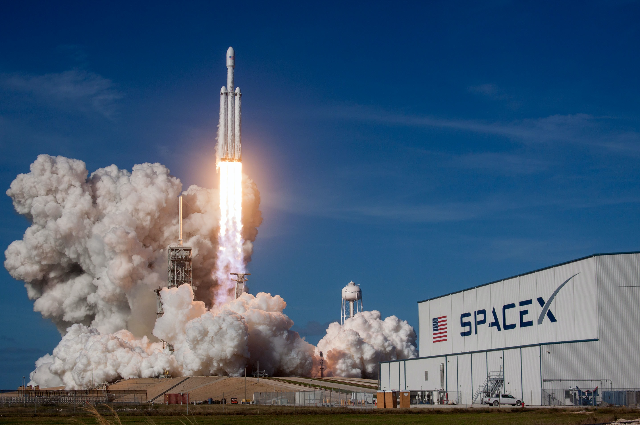
- GHGSAT
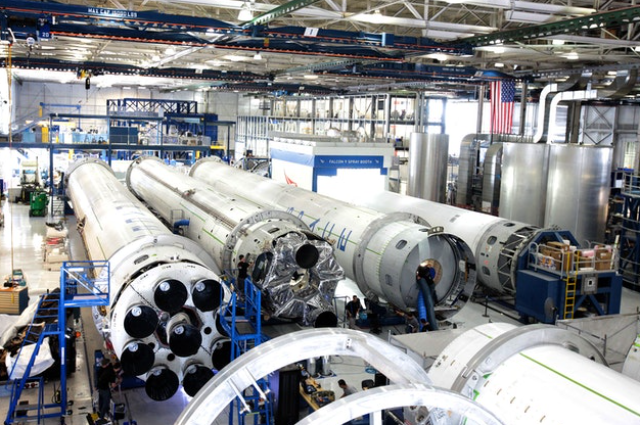
GHGSat, a Montreal-based business, utilizes its own satellites to evaluate greenhouse gases from orbit and uses spectroscopic detection to detect even minuscule leaks from oil and gas and other large emissions anywhere else on the planet. They successfully launched their second satellite in September, which uses sensors photos from satellites, drones, and balloons to provide businesses with a bird's-eye perspective of a variety of human activities. That capacity can be put to good use: in 2020, it expanded a relationship with Unilever to track the supply chain for sustainable palm oil in Southeast Asia, using mobile data from delivery trucks to watch how raw materials go from field to refinery.
- NASA (National Aeronautics and Space Administration)

The best space firm in the world, according to the same ranking, is SpaceX, but what is the largest space company in the world? NASA should be credited for this achievement. NASA was the first space organization to land a man on the moon, and it did it in 1969, when Neil Armstrong was the first man to walk on the moon, winning the "space race." The National Aeronautics and Space Administration, or NASA, is a federal organisation responsible for the civilian space programme, as well as aeronautics and space development in the United States. In the latest headlines, NASA has dispatched rovers to Mars and, like SpaceX, is working on going to the red planet. NASA's current plans call for people to return to the moon in the Orion spacecraft for additional space exploration studies.
- Blue Origin
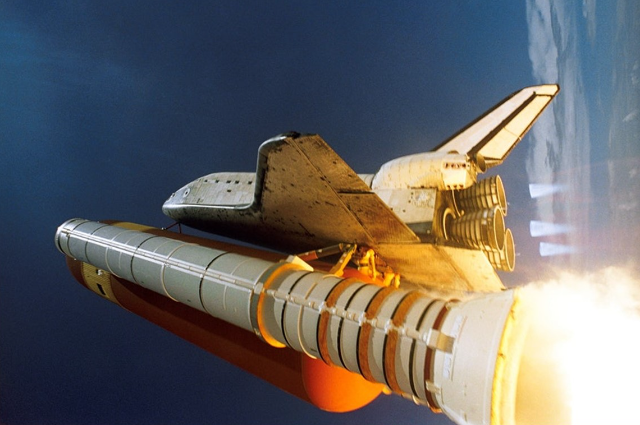
Blue Origin, like SpaceX, was created by a well-known billionaire Jeff Bezos, the founder of Amazon, who established Blue Origin. Blue Origin's major goal is to make spaceflight accessible to ordinary people. Moving into the orbital spaceflight technology market as a rocket engine supplier in 2014, the company has now established plans to manufacture and operate its own orbital launch vehicle.
BE-1, BE-2, BE-3, BE-3U, BE-4, BE-7, and the pusher escape motor are some of Blue Origin's revolutionary rocket engine innovations. In recent times, Blue Origin has worked with NASA, DARPA, United Launch Alliance, and the United States Space Force. Low-altitude test flight technologies like the Charon and Goddard, as well as the New Shepard and New Glenn launch vehicles, are among Blue Origin's launch vehicles.
- Roscosmos
The Russian Federation's space missions and cosmonautics programs are overseen by the Roscosmos State Corporation for Space Activities. Roscosmos was the first space organization to launch a man into orbit beyond Earth's atmosphere. Today, the corporation is centered on space development, and works on its new headquarters in Moscow, Zavodskaya Street 18: The National Space Centre has recently begun. ISS participation, science projects, rocket development, spacecraft, and space systems are among Roscosmos' current space initiatives. Because of its involvement in many parts of space technology and history.
- Virgin Galactic
The next firm on this list to be formed by a well-known billionaire is Virgin Galactic. Richard Branson, the founder of the Virgin Group, launched Virgin Galactic, a spaceflight enterprise inside the Virgin Group. The company's goal was to complete the inaugural journey — a program to carry private individuals into space by 2009 — but the plan had numerous flaws, culminating in a devastating in-flight tragedy. Virgin Galactic launched a manned space voyage into space in 2018 that traveled up to 56 miles into the atmosphere.
The Role of the International Space Station in the Future of Space Exploration
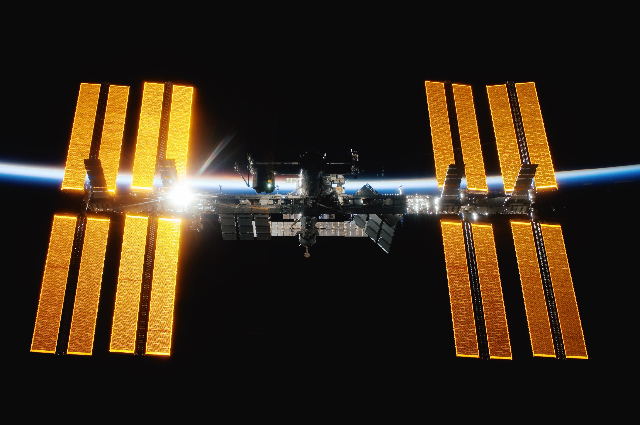
NASA's spending has averaged a bit more than $15 billion since 1958 (this does not include US military space spending). This figure nearly doubled during the Apollo years; it declined by a third in the 1970s but has been constant (in constant 2012 dollars) since the mid- 1980s.
The problem with NASA isn't a shortage of funds; it's a lack of strategic direction from America's political establishment. There is far less political motivation in space exploration now than there was during the Cold War battle with the Soviet Union. The prospect of colonizing another planet has a lot of appeals. However, there are a few issues. First, with existing propulsion technologies, a voyage to Mars could take months, and the crew would most likely not be in a position to conduct exploratory or colonization missions when they arrived. Any follow-on assistance operations will be impacted by the long flight.
Second, the Martian environment is hostile, requiring more assistance than the lunar landings in the 1960s and 1970s, increasing the mission's weight, cost, and risk. For a variety of reasons, lunar exploration is appealing. Lunar exploration (both manned and unmanned) is already possible with current technology, and it is expected that some countries, most likely China, will return to the moon within a decade. Given the lower cost and technological barrier for exploration comparable to Mars, U.S. space allies can engage in lunar exploration. Lunar exploration has the potential to become a new focal point for international collaboration in space.
A combined robotic exploration campaign by space partners might lay the groundwork for a human departure and deployment. The moon's proximity to Earth (in comparison to Mars) makes support for an exploration mission more viable and decreases risk to the astronauts, both during the journey and in the event of a recovery. Ultimately, lunar exploration is a fraction of the expense of a genuine Mars mission. Returning to the moon is significantly less expensive than flying to Mars, and if prior calculations are true, establishing a permanent base on the moon would be less expensive than constructing the ISS and would have similar operational costs.
NASA devotes 35 hours per week on average to scientific research. NASA conducted 62 investigations in 2008. Since then, over 100 investigations have been conducted annually, with more than half of them focusing on issues with long-distance manned flight. The ongoing functioning of the shuttle, with its ability to transport big cargo loads, was reliant on NASA's research program for the ISS. As a result of its demise, there are presently delays and limitations in the capacity to perform research aboard the International Space Station.

The International Space Station (ISS) is the most visible symbol of international cooperation in space. The ISS, according to science adviser John Holdren, represents “the pinnacle of international cooperation in space to deadline least until 2020.” The space station's consequences are that NASA will continue to operate it for the duration of its operational life, and maybe longer, if doing so does not result in a significant rise in cost. Even if the science gains are limited, given present budget levels, the space station provides significant political and experiential benefits.
Applying space law to establish rights and liabilities in the space frontier
- The United Nations first steps towards the space law

Humanity's remarkable imagination has resulted in a breakthrough in outer space. For society, it has been a story of growing mental boundaries. Space goals contribute to a better quality of life, the quest for knowledge, and scientific progress. In a Senate hearing in the United States, scientists offered a variety of viewpoints on space ambitions. In explaining the law of space, Aldous Huxley, who states that “in practice, we are generally forced to choose between an unduly brief exposition and no exposition at all” in a broad and vast spectrum of human activity.
- United Nations Office for Outer Space Affairs (UNOOSA)
Initially, the UNOOSA was established as an ad hoc group within the United Nations Secretariat to promote the peaceful usage of outer space. Resolution 1348 of the United Nations General Assembly was created in 1958. (XII).
The UNOOSA section was transferred to the Department of Political and Security Council Affairs shortly after its inception, and in 1968 it was renamed the Department's Outer Space Affairs division.
- UNISPACE Conferences

In 1957, Sputnik 1 signaled the beginning of the space age. The United Nations has emphasized the necessity of peaceful international coordination in space since then. Many people feel that outer space is like the wild west, but few realize that it has the capacity to support massive socioeconomic development in the future. No single country possessed the technological prowess required to reap such rewards. As a result, the need for worldwide cooperation on this was understood, as the popular quote goes, "Unity is Strength." UNISPACE was the name given to this series of meetings. Three UNISPACE conferences have taken place, all of which was held in Vienna.
- Treaties and Conventions governing Space Laws

Legislating space rules, as Andrew G. Hailey correctly stated, may be one of the most difficult tasks for the law. The universe is enormous. It's difficult to make a decision on it. There are five international treaties that deal with some of the most basic topics relating to space. These are the problems:
- Any state that does not have space laws.
- Exploration freedom and other associated issues.
- Damages and liabilities incurred as a result of space objects.
- Astronaut and spaceship safety and rescue.
- Keeping dangerous interventions at bay.
- Avoiding involvement in the environment.
- Performing scientific research procedures.
- Method of resolving disagreements.
Under the United Nations umbrella, there are five treaties that control outer space. These are also known as the "five United Nations Outer Space Treaties."
- Outer Space Treaty
It is one of the key regulations that govern all member states who have signed the treaty, as previously stated. This also encourages the usage and exploration of space-related activities in a peaceful manner. It began in 1967 and continues to this day.
- Rescue Agreement
In 1967, the United Nations General Assembly approved the rescue pact. This agreement encourages the use of all available resources to assist and rescue astronauts in peril. Upon request by the party in distress, member states must swiftly support the states in returning the launching party's listed space objects. This treaty is best described in these two articles.
- Article 5
Upon collecting information on the finding of a space object or its components, whether on the high seas or within its authority, any contracting party must notify the releasing state and the United Nations Secretary-General. At the request of the releasing party, all treaty members shall endeavor to retrieve an outer space object or any element within their authority if it is rationally achievable.
When a member state of the treaty discovers an outer space object or any portion under its authority, the launching party may refer that the object is returned after accurate verification. if a party discovers that an object is dangerous in nature while procuring it, the launching state must promptly take suitable measures to eliminate or control the harm caused by the object. The launching party is responsible for the expenditures incurred by the aiding party in obtaining an object or a component from space.
- Article 8
All states are welcome to propose revisions to the agreement.
The amendments must be approved by a majority of the members.
The Convention on Liability
In 1971, the United Nations General Assembly agreed on a liability convention. This treaty essentially expands on Article 7 of the Outer Space Treaty. The grounds under which a state falls responsible to pay damages to another state are laid out in this convention. This agreement also established the processes for resolving disputes and filing a claim for damages.
- Article VII
The treaty grants each of the treaty's signatories the ability to deploy items into space, along with the moon and other celestial bodies. If their object causes harm to another state, business, or people, they will be considered internationally accountable.
- The Registration Convention
In 1974, the General Assembly negotiated and agreed on the Registration Convention. Following the signing of the Outer Space Treaty, the Rescue Agreement, and the Liability Convention, governments stated their worries that these treaties and agreements needed some legal recognition/identity in order to perform properly. This was necessary because:
- It was impossible to determine who should be held accountable for any damage done in the absence of a competent registration system.
- It was impossible to determine who owned the items recovered from space.
- The Moon Agreement

Among other conventions, the Moon Agreement has been the most contentious. Between 1972 and 1979, this agreement was hotly disputed. However, it was not until 1984 that the fifth country, Austria, ratified it, that it became effective. This occurred following the passage of Resolution 34/68.
The following are the main points of this agreement:
- The primary goal was to confirm that the moon and other celestial bodies are covered by the other terms of the Outer Space Treaty.
- Only peaceful uses of the moon and other heavenly bodies are permitted.
- The ecosystem must not be harmed in the proper investigation of the moon and other celestial bodies.
- Any station that is to be created on the moon or on other celestial bodies must tell the United Nations of its position, as well as its goals and objectives.
- The International Space Station (ISS)
The International Space Station is a global initiative. It's a massive spacecraft, weighing about 450 tonnes. It is a joint project including the following countries:
- European member nations
- Russia.
- Canada.
- Japan.
- The United States
The astronauts on the International Space Station mostly undertake scientific experiments that are not possible on Earth.
The International Space Station's legal framework
The ISS is governed by a variety of legal structures and requirements. These International Agreements and Memorandum of Understanding (MoUs) govern it.
- Intergovernmental Agreement happened so far:
- The IGA stands for the Intergovernmental Agreement on the International Space Station.
- This is a treaty that was signed on the 29th of January, 1998.
- The Space Station project involved 15 state governments.
This agreement created the groundwork for a long-term collaboration to build a model of a civil space station in space that would only be utilized for peaceful reasons.
- International Space Station Laws and Liabilities
Many issues may occur when such a large undertaking is undertaken. Such a calamity was predicted, and countermeasures were devised. The Liability Convention of 1972 lays forth the fundamental standards of liability for space operations. The following are the obligations imposed by this convention and the Intergovernmental Agreement:
A provision for "cross-waiver of liability" has been included in the Intergovernmental Agreement. This empowers all five member states, as well as their linked entities (contractors, subcontractors, users, and customers), to sue another state member or its related entities for damages. Each state must formally put up a contract with its own contractors and subcontractors in order to comply with these duties.
There are some exceptions to the liability cross-waiver. They are as follows:
- Intentional misbehavior.
- A claim for bodily injury brought by a person.
- A claim for death made by a person.
- Claims of Intellectual Property.
Everyone who uses the Space Station agrees to an inter-party liability waiver. It's part of their agreement with the European Space Agency. It goes like this:
- No state shall litigate or initiate arbitrary claims against any third party for activities relating to the International Space Station.
- The regulations that apply to any disputes and other procedures must be jointly agreed upon by the Space Station's member states and the European Space Agency.
- The country where the Arbitral tribunal will meet must be determined in advance by the treaty between the member states.
Conclusion:
New approaches, budget objectives, and considerations on how Western space countries will collaborate will be required to meet the challenge of space exploration. In the end, cooperation in space is a political decision. This isn't always obvious. Cooperation, on the other hand, is a learned behavior that is influenced by both experience and institutions. Nations benefit from space activities on a scientific, commercial, and military level. A nation's finances, capability, and prestige are reflected in its space operations. Achieving the full strategic benefit of space exploration in a new and more hostile international context would necessitate a redefining of exploration aims that captivate both the public imagination and political backing.
. . .
References:
